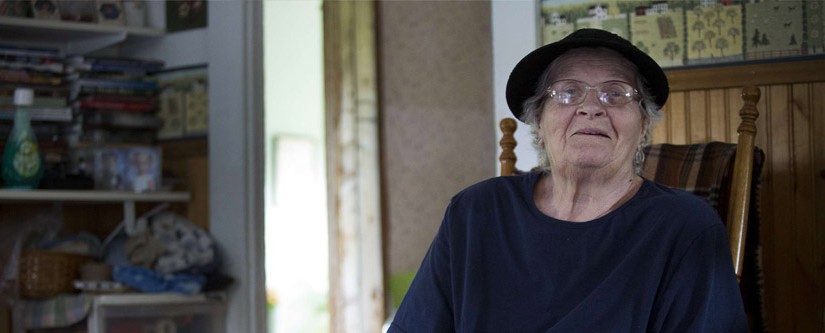HomeWarming Restores Homeowner’s Comfort & Pride

Annie MacAskill’s ‘old-timer’ house may have been built in the 1800s, but it’s now a model of modern energy efficiency.
Annie MacAskill has sadly passed away, so we offer this story in her memory. We thank her for welcoming us into her home and were delighted to have her in our HomeWarming community.
To keep warm in the winter, Annie MacAskill used to sleep in the same room as her oil stove, and borrow firewood from her son when she ran out. Even though this past winter was difficult, MacAskill had wood left over. And, at 81, she says it’s “the first winter where I could sleep in my own bedroom.”
A resident of Grand River, Nova Scotia, and a widow living on a low-income, MacAskill was referred to the HomeWarming program last year. Efficiency Nova Scotia and Clean Foundation administer HomeWarming, and assist income-qualified homeowners with improvements to help them feel more comfortable year-round by reducing heating and power bills.
In most homes, heating and cooling is about 60 per cent of the energy costs, and reducing these expenses can make other household costs more manageable. For MacAskill, having her attic and cellar insulated and draft-proofing done slashed her oil bill in half.
While not all HomeWarming participants qualify for appliance upgrades, MacAskill did qualify to have her inefficient freezer replaced at no cost. Since all of her upgrades have been completed, she’s noticed a drop in her power bills from over $165 to just over $110.
“I could never afford this if I lived to be 100,” says MacAskill. “Be thankful to God there is such a thing when you’re low income.”
MJM Energy, an Efficiency Trade Partner with Efficiency Nova Scotia, completed the work last summer. Gary Ferguson, General Manager at MJM Energy says “we collectively have allowed her to stay more comfortable in her own home without the worry of freezing pipes and concerns about paying increasing heating costs.”
While MacAskill appreciates the improvements, and the savings, she found the service to be particularly impressive. She says MJM’s team “went out of their way to be nice to me. People today, they just want to come in and out, and be gone.”
MJM’s staff took the time to unload her old freezer and put the food back in after setting up the new energy efficient one. They also talked with her and shared stories about their families.
“Where do you get people who go above and beyond like that,” she asks. “They treated me with such dignity.”
MacAskill describes her home as an “old-timer,” originally built in the 1800s and owned by her husband’s parents. After the energy efficient upgrades, the home’s EnerGuide rating jumped from 43 to 63, and she is now very proud of her home.
“I went from least efficient to the most efficient,” boasts MacAskill. “I’m in the top 10 per cent of houses this age in Canada.”